Mount Elbert & The Rockies
Hidden in a maze of ownership and logging roads, The Rockies is a high summit with some fascinating history. A nearby summit around the same height has been given the name Mount Elbert, the highest mountain in the real Rocky Mountains. These summits have a special significance to Washington peakbaggers. For lookout enthusiasts, The Rockies summit once had a fire lookout. Because of the remoteness of the mountain, there is still a large amount of debris laying around. Much of the original trail still exists near the summit. The other reason to climb is that one of these 2 peaks rises to over 2,600 feet of prominence. There is debate as to which one as the method for calculating summit height varies. Most Washington peakbaggers would put Elbert as the highest while The Rockies is viewed higher by out of state visitors. The Rockies makes for a better climb if you choose only one.
WillhiteWeb.com - Washington Hiking
Access:
Many routes have been taken but the easiest if you have a 4WD high clearance will be described here. Some roads are not shown on USGS maps so print mine below. These roads are subject to washout at any time and little info can be found for current conditions. From Elbe, go south on Highway 7 for around 4 miles to a right turn on FR 74. The turn is between the 2nd and 3rd roads to the small town of Mineral. Follow FR 74 for over 10 miles until a sharp left off FR74 at a Barrow Pit. At 13.7 miles is a 5 way intersection but this may not be apparent. The road may be extremely brushy at this point depending on road maintenance. (Most may want to start walking back at the 5 way.) Follow the spur in the direction of Mt. Elbert which reaches a dramatic narrow ridge for a road to be on top. The road traverses below the north side of Mount Elbert and hits the saddle between Elbert & The Rockies. I drove to the two X marks shown on the map below.
Mount Elbert Route:
I hiked up an old road on the north side which faded out and turned into a short bushwhack. An easier but longer route may be to walk the road down and around to the south side where it is shown to climb back up nearly to the summit.
Distance: 1 to 3 miles depending on where you park
Elevation Gain: 300 feet for Elbert, 800 feet for The Rockies
Summit Elevation: Elbert is 4,327 feet, The Rockies 4,320 to 4,340 feet
Prominence: 2,600+
Access: FR 74 is a gravel road, rough in places after that
The Rockies Route:
From the spot marked on the map on the ridge, an overgrown road works west just under the ridge. Follow until the road ends. Just before the end of the road, look into the uncut forest on the left to find the original summit trail. It is in good condition and easy to follow. But, once it reaches the base of the final climb, it is lost for a distance in brush. Higher up, it can be found again although it may be easier at times to just avoid, where overgrown. The last several switchbacks are easy to follow leading to the former lookout. The tread of this trail is good and it wouldn't take much to bring this trail back to life.
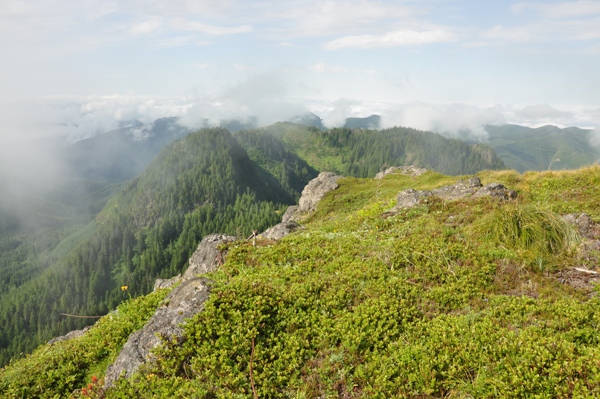
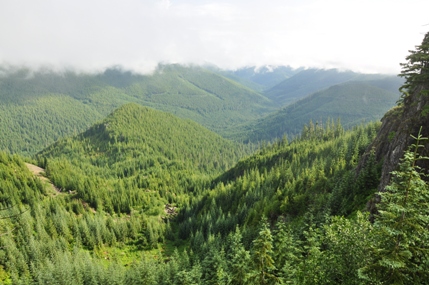
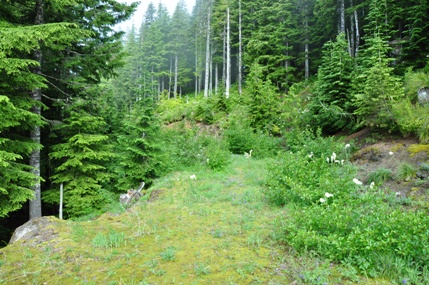
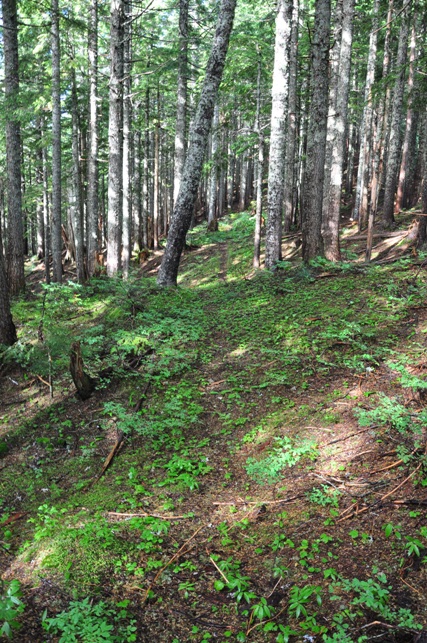
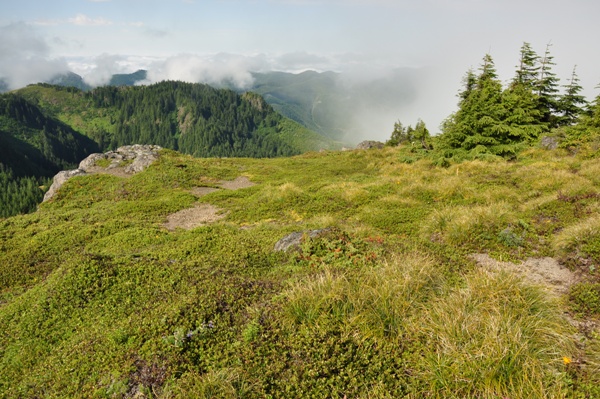
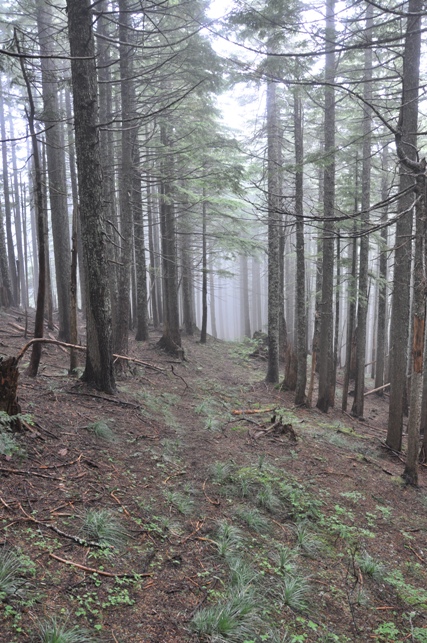
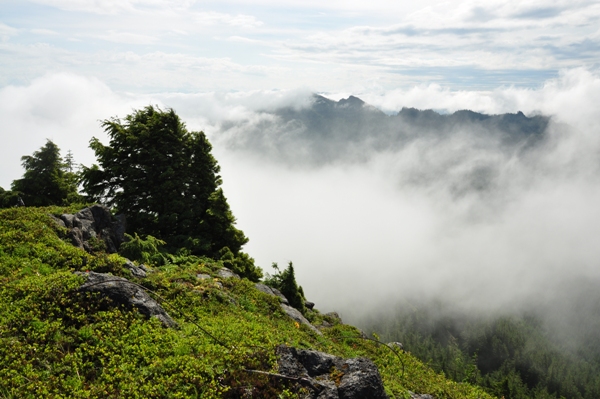
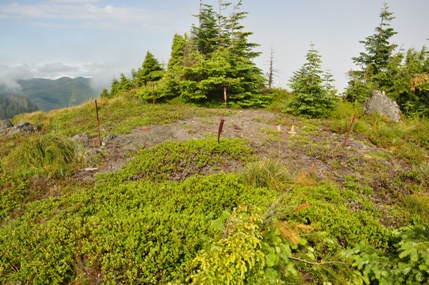
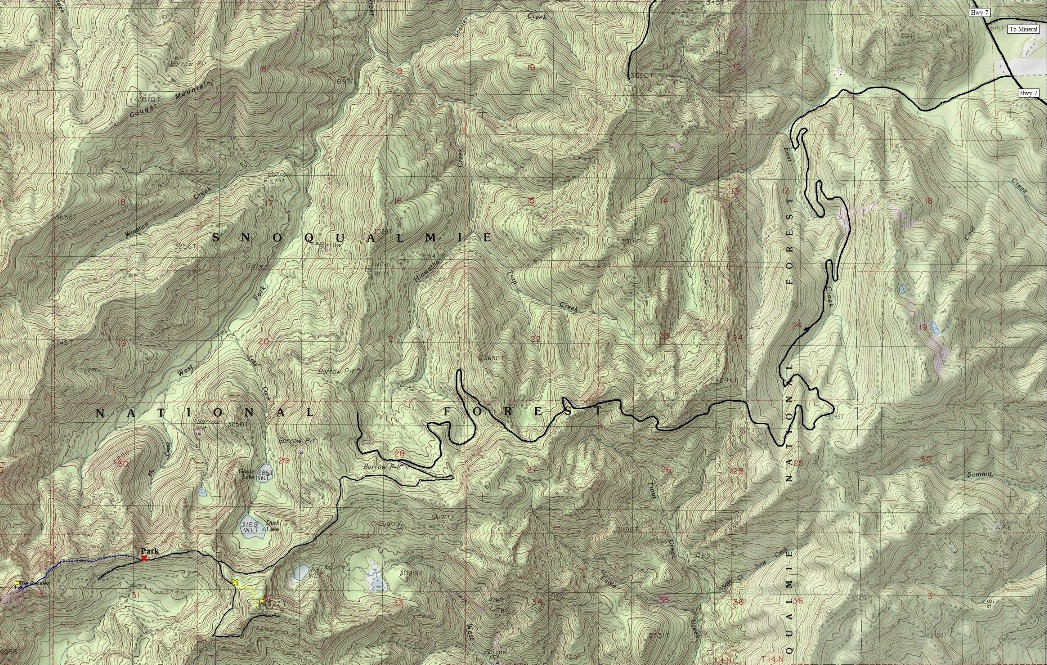
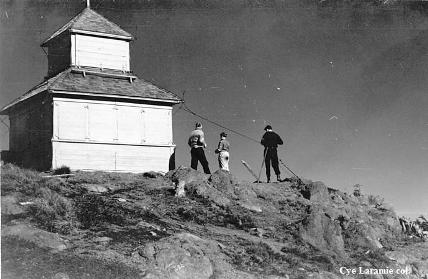
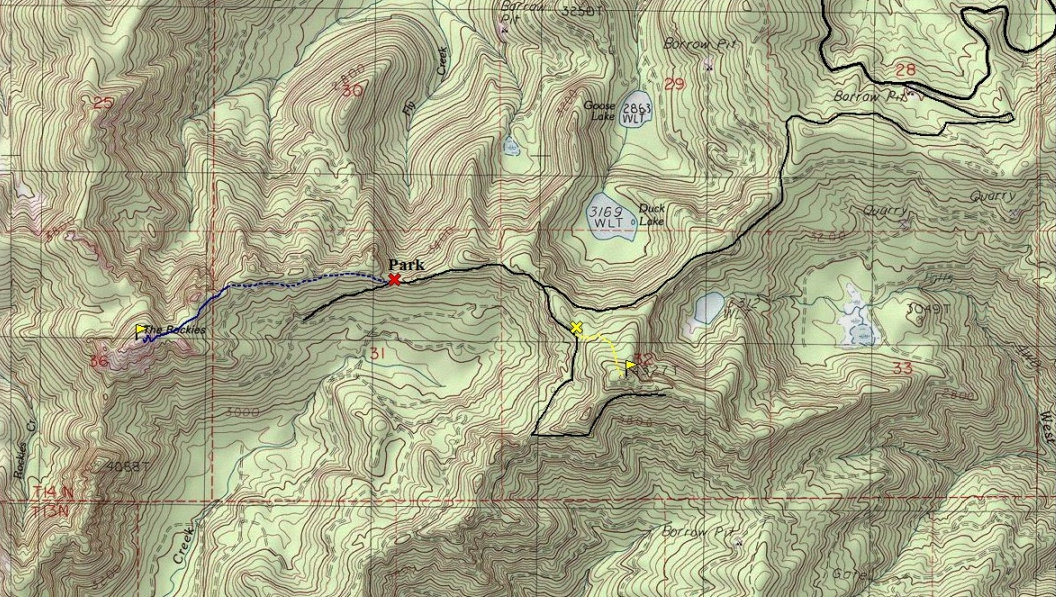
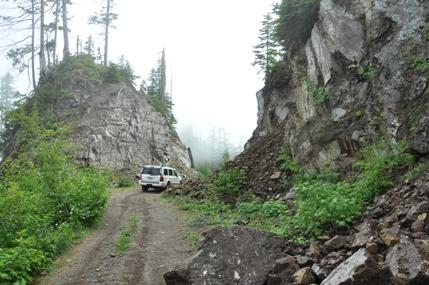
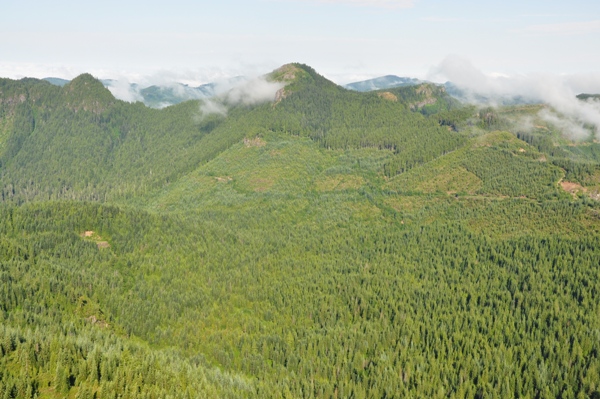
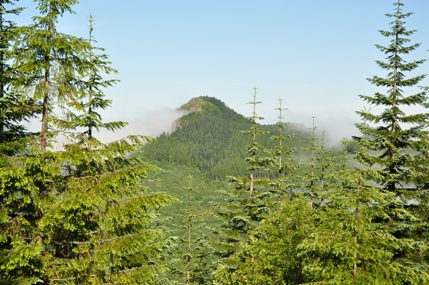
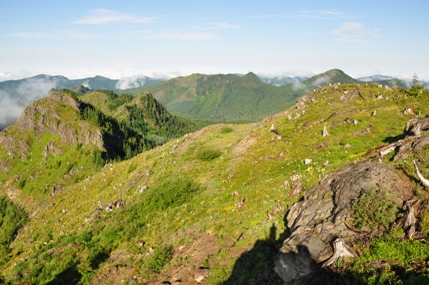
The Rockies from Mount Elbert
The Rockies summit
A very expensive road cut for a logging road
D-6 cupola cabin
Summit area of Mount Elbert
Mount Elbert in the clouds from The Rockies
Summit lookout spot for The Rockies
The Rockies trail in the clouds
The Rockies trail in the sun
View from The Rockies
View from The Rockies
West Fork Nisqually River Valley from the old road to The Rockies
On the old road to The Rockies trailhead
Lookout History
This location was used as early as 1922 for fire detection when Wallace Mead was the lookout at the site with a phone line (July 7, 1922 The Chehalis Bee-Nugget). The Lookout Inventory shows a D-6 cupola cabin built in 1929. The lookout in 1931 was killed, see story below. Photos from the roof were taken on July 26, 1934. In 1941, a Army Air Corp twin-motored bomber crashed near the summit scattering wreckage over two acres of timber. During 1942 and 1943, the site was used by the Aircraft Warning Service. The cabin was eventually destroyed in 1956.
Lookout Killed in 1931
Thurman Senter, 29, employee of the federal forest service, was the victim of an accident near Morton Saturday evening, in which he was shot through the neck by a bullet from his own gun. Senter, with Don Peters and Clarence Workman, government ranger, were building some cabins about four miles from Little Rocky lookout station. As they completed their work for the day, around six o'clock, Senter went down to a nearby spring to get some water. When he bent over, a gun in his shoulder holster slipped out, struck a rock in the creek and sent a bullet through his neck. Workman stayed with Senter while Peters started out for help. He walked to the Jack Morris place, four miles outside of Morton and there a car was obtained to go to Morton to notify Dr. C.B. Ritchie. The doctor started right out, but did not reach the camp until 3 a.m. Sunday, due to the trail that can be negotiated only on foot or horseback. Senter had died about eight o'clock Saturday night. (Centralia Daily Chronicle) Senter was a very bright, local young man, who it is understood, had given good service at the lookout.
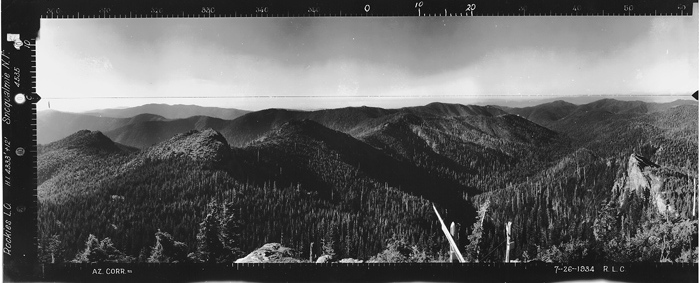
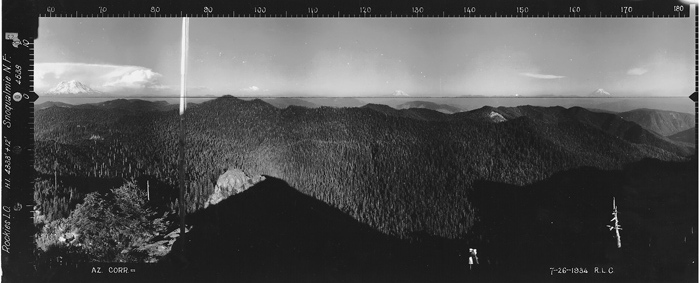
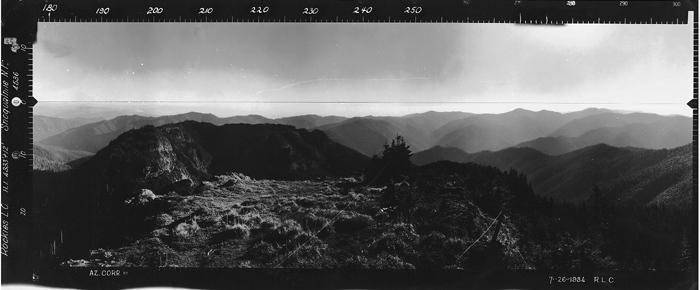
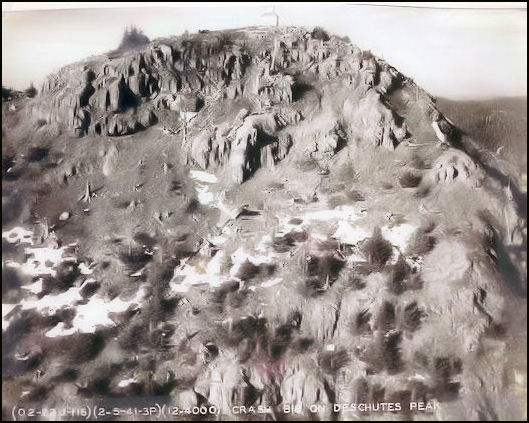
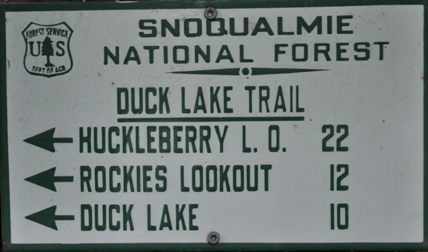
1941, Army Air Corp twin-motored bomber crashed near the summit. This photo seems to have been taken to show the debres field.

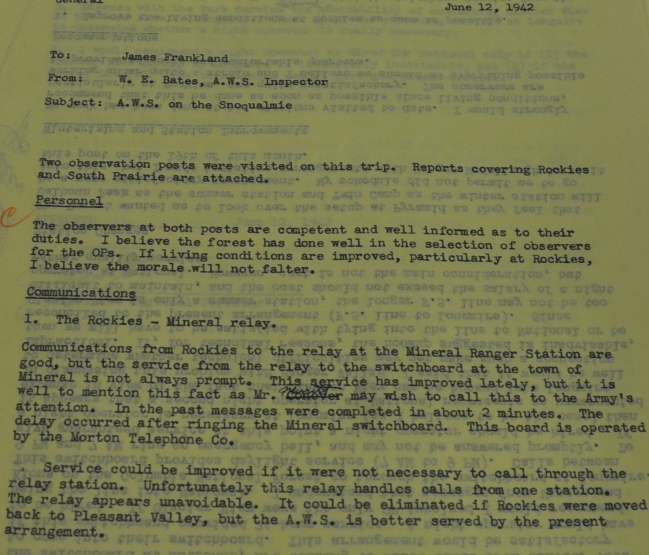

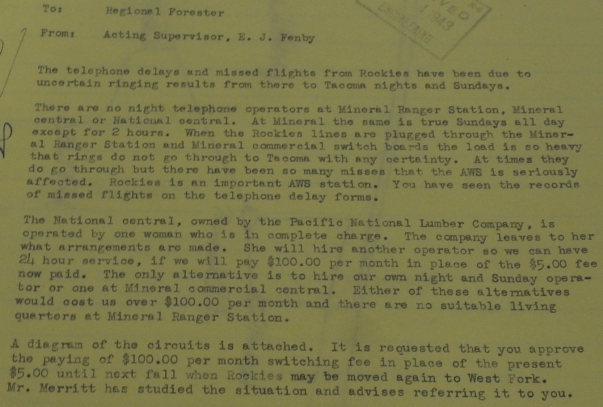
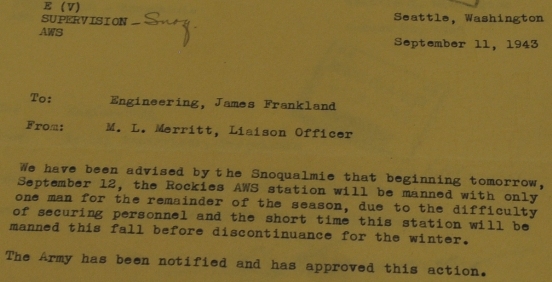
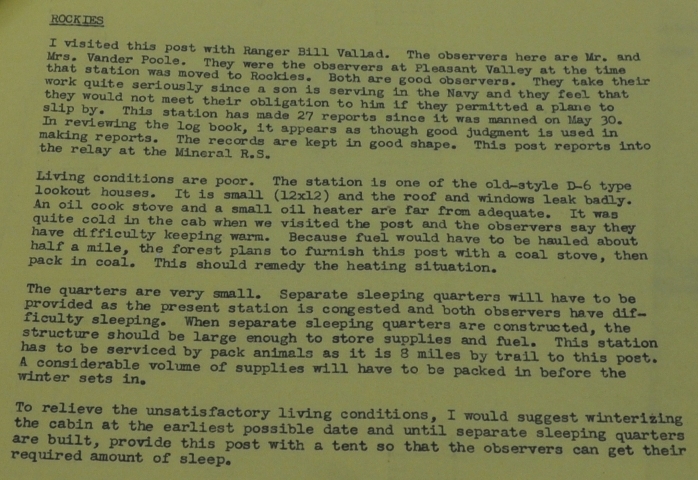
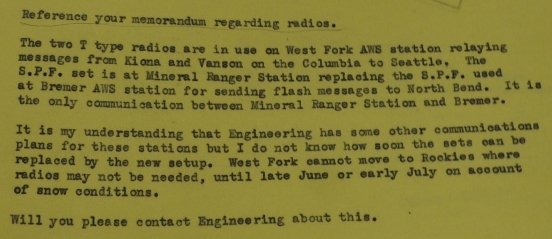

AWS DOCUMENTS
Southwest 1934
Southeast 1934
North 1934



























